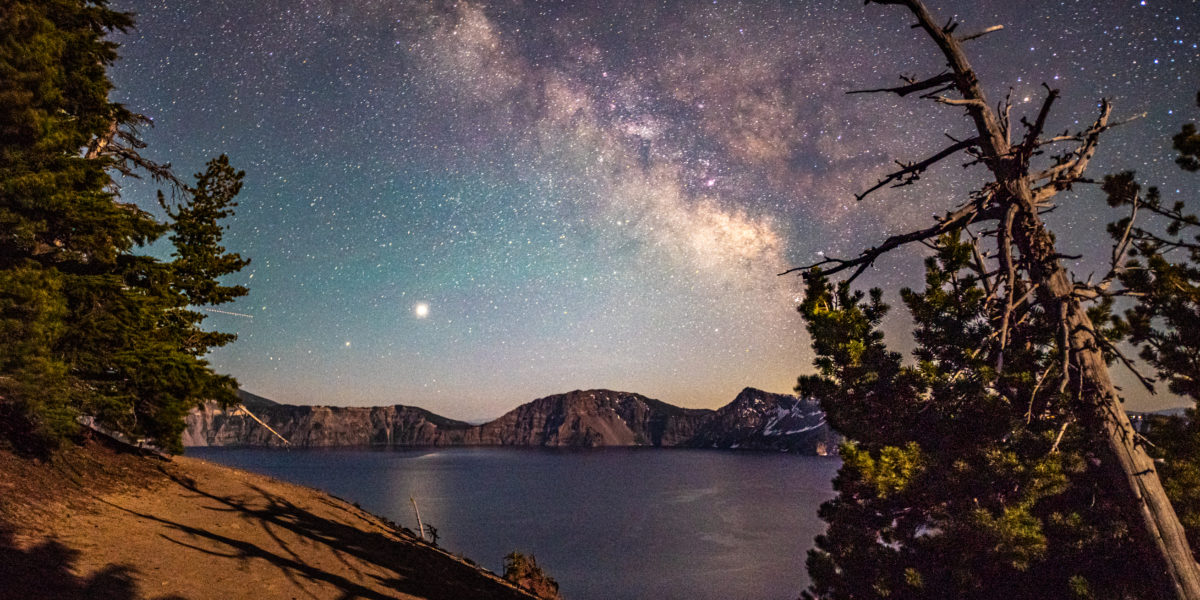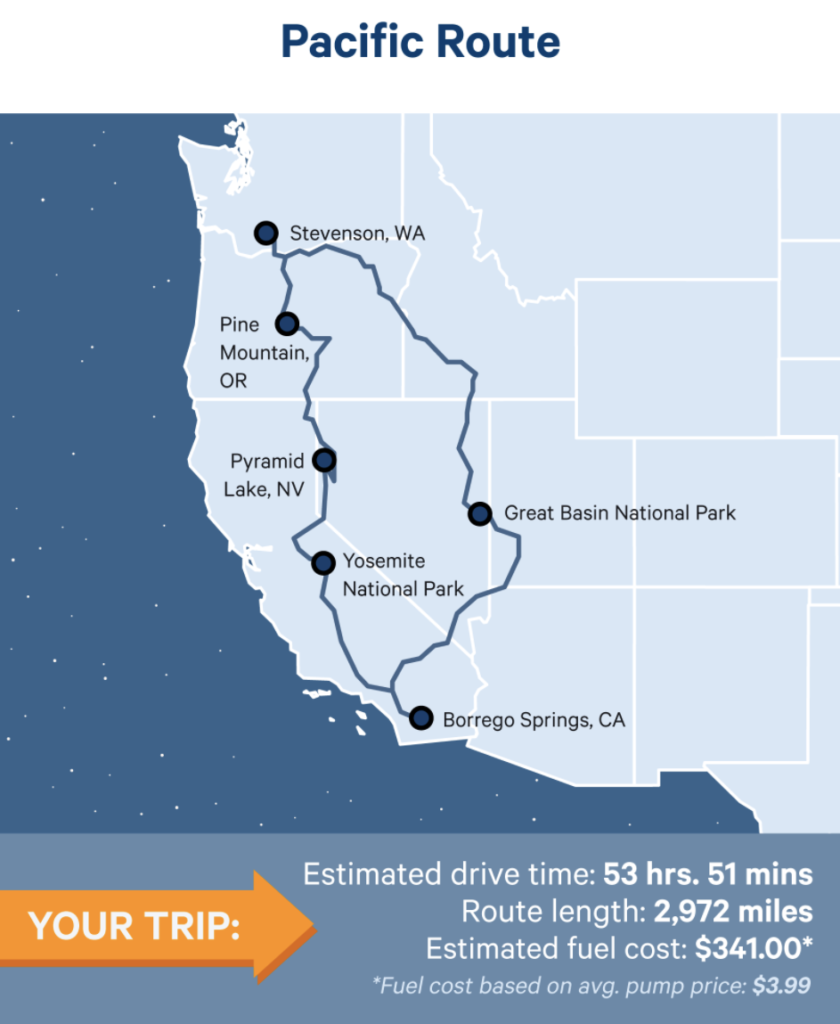
Plan Your Stargazing Road Trip Across the West with These Dark Sky Routes
Each stargazing-focused stop is mapped as a destination that can be appreciated by the naked eye.


More than 99% of the U.S. population lives in areas with light pollution capable of drowning out even the most prominent constellations and planets. What’s more, approximately one in every three humans, and nearly 80% of North Americans, are unable to see the Milky Way.
Although stargazing opportunities have diminished thanks to human interference, an abundance of unimpeded skies can still be enjoyed if planned properly.
Using data from Dark Sky Maps and In-The-Sky.org, the San Francisco-based travel company VacationRenter compiled four road trips that yield the best chance for night sky enthusiasts to gaze into the unobstructed infinite.
Of the four itineraries, two spotlight some of the best stargazing opportunities throughout the West. Each route is calibrated to include fantastic sights across state lines, optimize travel time between stops, and avoid roads that could pose seasonal restrictions. Additionally, the stargazing-focused stops are mapped as destinations that can be appreciated by the naked eye—no equipment necessary.
With its wide open expanses, the American West no doubt features a host of dark sky areas that were left off these lists for expedience’s sake, “but travelers can add or subtract locations to their road trips as they please,” the study’s authors wrote.
Let’s see what’s in store.

Courtesy of VacationRenter
An equivalent distance of a coast-to-coast drive, the Pacific Route begins and ends in Nevada’s Great Basin National Park near the town of Baker, a dark sky mecca that not-so-coincidentally boasts a hotel called the “Stargazer Inn.”
Additional stops include California destinations like Borrego Springs and Yosemite National Park. Pyramid Lake in Nevada is also featured, as is Oregon’s Pine Mountain, which sits just over 30 miles from the bustling outdoors haven that is Bend. (If crossing national parks off your bucket list is a goal, Crater Lake National Park is just a short two-hour detour away.)
The drive’s final checkpoint is a stop in Stevenson, Washington, a town that sits just across the border from Oregon and is within an hour’s drive of Portland.
Using this exact itinerary, the scheduled drive time is estimated to take a total of 54 hours and just under 3,000 miles—about the exact distance, mileage-wise, from San Diego to Boston. (But our favorite trips seldom stick to an rigid itinerary. Go explore!)

Courtesy of VacationRenter
Thanks to the lowest amount of light pollution, the Rocky Mountain range touts more dark sky spots than anywhere else in the United States—and this road trip includes a particularly stellar representation.
Start and end your drive in Ketchum, Idaho, a town that, four years ago, was given the International Dark-Sky Association’s Dark Sky Reserve designation, making it the only U.S. destination and just the 17th location in the world to have the title bestowed.
“Look up on any given clear night around here and you’ll be memorized by billions of unobscured stars littering the sky,” Visit Sun Valley’s Travis Amick writes. “Here, shooting star sightings are the norm, astro-photography opportunities are some of the best in the country, and the Milky Way takes center stage as it brilliantly erupts from the southwest quadrant of the sky each night.”
Subsequent stops include West Yellowstone in Montana, Colorado’s Great Sand Dunes National Park, Flagstaff, Arizona, and Utah’s Arches National Park, the last checkpoint before returning to Ketchum.
The Mountain Route’s estimated drive time is 42 hours, covering a distance of 2,683 miles.
(Once again, detours are encouraged.)
Interested in hitting the road? You’re not alone. Recent years have paved the way for a road trip renaissance unlike any in recent memory, as work flexibility, travel restrictions, and active avoidance of the crammed spaces of airlines combined to spawn a blossoming pavement-bound movement. Why not do a little stargazing on the way?
Check out the full VacationRenter study for additional information, including data on seasonal meteor showers and lodging tips to optimize those starry nights.
